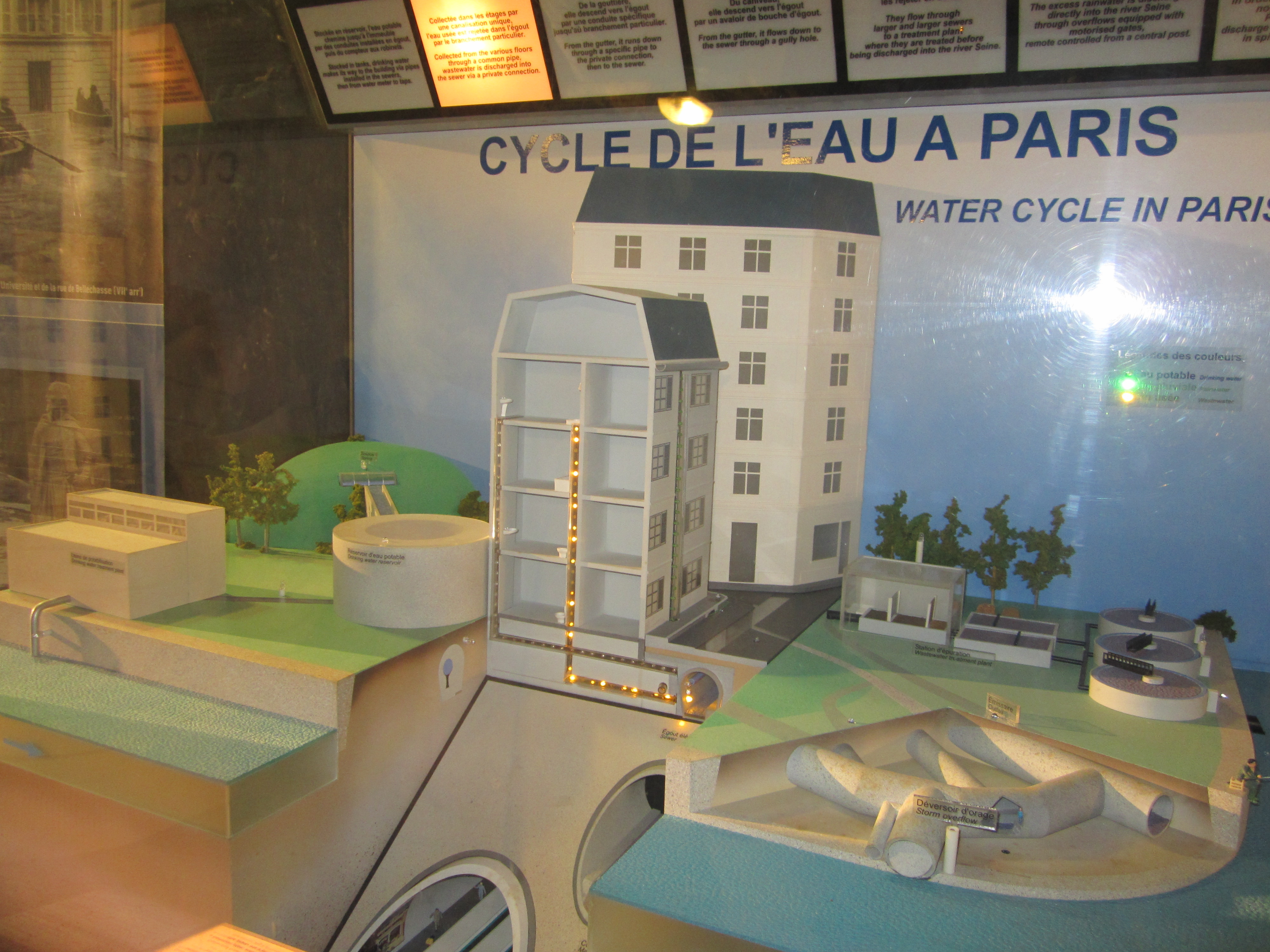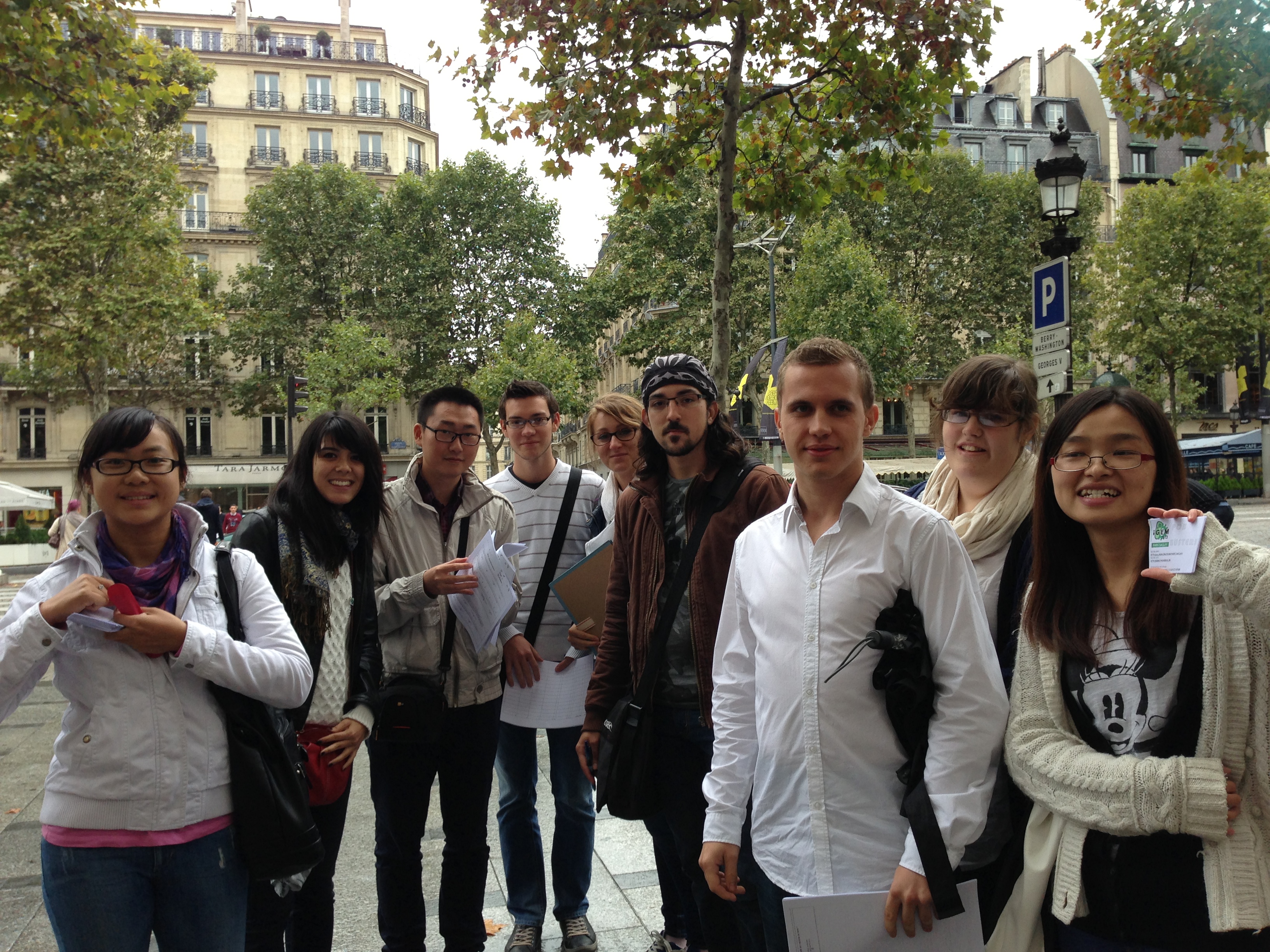Team:Paris Saclay/Sewers
From 2013.igem.org
CarolineMir (Talk | contribs) (→Bacterial Filter) |
CarolineMir (Talk | contribs) (→Bacterial Filter) |
||
| Line 84: | Line 84: | ||
[[File:Psfiltre1.jpg|center|600px|caption]] | [[File:Psfiltre1.jpg|center|600px|caption]] | ||
| - | + | One of the major problem is the weak concentration of PCBs in water, but this system can be applied for others degradations and optimizes the rate of degradation without the risk of proliferation. | |
Revision as of 20:25, 28 September 2013
Sewers of Paris
The Parisian Sewers are about 2400 km long, they gather and expel the flow and waste water. During our visit, we learned about the parisian water cycle and about the different ways to clean water.
- Stocked in tanks, drinking water makes its way to buildings via pipes installed in the sewers, then from water meters to taps.
- Collected from the various floors through a common pipe, waste water is discharged into the sewer via a private connection
- From the gutters, rainwater flows down to the sewer through a gully hole
- They flow through larger and larger sewers to a treatment plant, where they are treated before being discharged into the Seine river
- The excess rainwater is discharged directly into the river Seine through overflows equipped with motorized gates, remotely controlled from a central post
- The overflows must remain closed in order to prevent the sewer network to be flooded by the Seine. Pumps are activated to discharge the excess water to the river in spite of its high water level
We also discovered the history of Parisian Sewer system, who built it, imagined it, and how it has been developed through the centuries.
It was very interresting to know how water is transported through sewers. We learnt a lot about bacterial depollution, wastewater depollution, and waterplant system.
Bacterial Filter
One of our goals is to develop a bacterial filter that can be used in treatment plant. The important part of the conception of this filter is to find a efficent system to prevent the spreading of bacteria in the environnement. To respond to this criteria, we have decided to base our filter on the iGEM Paris-Saclay 2012 project : gemote. This project limits the spreading of bacteria thanks to temperature, indeed bacteria can't survive under or over a certain temperature limit. To design our filter, we based our researches on the model of the bacterial bed.
The common bacterial bed :
The common bacterial bed is composed by a porous material used as a bacterial support. Dirty water is spraying on the top with a sprinkler system and water streams in the bacterial culture during one hour. The clean water is collected on the back of the vat and bateria are feed thanks to an oxygen system. When the bacteriological mass is too important, bacterial films naturally fall and have to be separated by settling. This method have some important disavantages :
- The bacterial mass must not be drowned, because bacteria stop their aerobic action
- The settling is long and not very efficient.
So, we have proposed these solutions :
- Our bacteria can degrade in aerobic and anaerobic environment, so the yield of degradation of PCBs is considerably raising.
- The destruction of bacterias can be improved by the gemote project : we can make bacterial culture between X and X+dX °C and the settling can be made below or over this interval. This system could raise the yield of destruction of bacteria and reduce the time of settling.
Our PS bacterial bed
It will be composed by a natural porous material : gravels with a blanc space rate of 50%. Thank to a thermostat, the temperature will be maintained at 50°C, at this temperature, bacteria could proliferate. Thanks to a sprinkler, dusty water will be sprayed on the top of the bacterial bed, and E.Coli could degrade PCBs. The cleaned water will fall in a vat with bacterial mass in excess. This vat will be maintained at the room temperature and the excess of bacteria will dead thanks to the gemote system. And this operation could be repeted.
One of the major problem is the weak concentration of PCBs in water, but this system can be applied for others degradations and optimizes the rate of degradation without the risk of proliferation.
references :
http://crdp.ac-amiens.fr/enviro/eau_maj_solution_p10.htm
http://www.emse.fr/~brodhag/TRAITEME/fich16_1.htm
http://www.eau-rhin-meuse.fr/tlch/procedes_epuration/F03_lit_bacterien.pdf
 "
"



